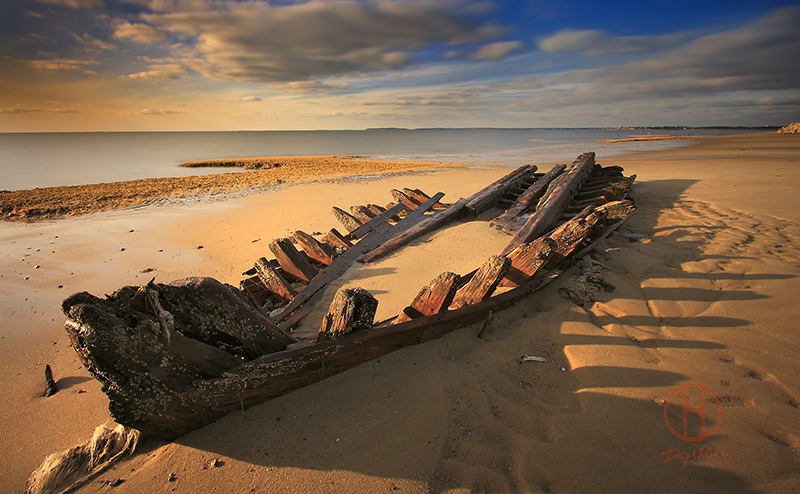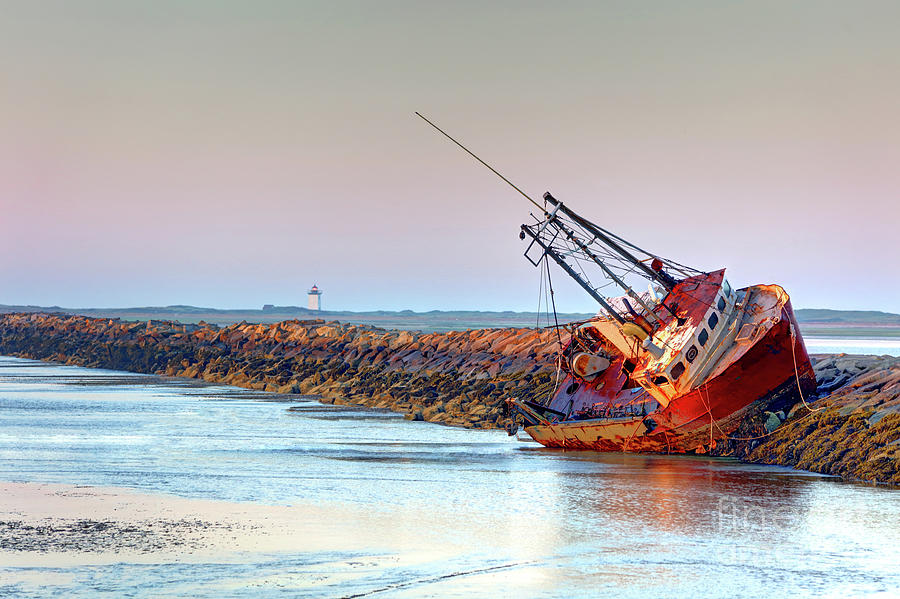
The Graveyard of the Atlantic: Unearthing the Shipwrecks of Cape Cod
Cape Cod, Massachusetts, with its iconic sandy beaches, charming lighthouses, and quaint fishing villages, evokes an idyllic image of New England coastal life. Tourists flock to its shores for sun, seafood, and the serene beauty of the Atlantic. Yet, beneath the shimmering surface of its seemingly tranquil waters lies a dark and tumultuous history, whispered by the shifting sands and the mournful cries of gulls. Cape Cod is not merely a vacation paradise; it is, more accurately, a sprawling, watery graveyard, holding the secrets of over 3,000 shipwrecks, earning it the grim moniker: "The Graveyard of the Atlantic."
For centuries, the stretch of ocean surrounding Cape Cod has been a perilous gauntlet for mariners. Its unique geographical features conspire with unforgiving weather to create a deadly trap. The outer Cape’s coastline is a crescent of shifting sandbars, treacherous shoals, and hidden ledges that extend far out into the ocean, particularly around Nantucket Shoals and Pollock Rip. These underwater hazards are constantly reshaped by powerful currents and the relentless force of the sea. Compounding this danger are the region’s notorious weather patterns: dense, pea-soup fogs that can descend without warning, obscuring vital navigational aids, and violent nor’easters, winter storms that unleash hurricane-force winds and monstrous waves capable of tearing apart even the sturdiest vessels.

A Legacy of Loss: The Age of Sail and Steam
From the earliest days of European exploration, the waters off Cape Cod proved a formidable adversary. Native Americans, long familiar with the sea’s unpredictable nature, likely witnessed countless maritime disasters. As trade routes flourished and maritime traffic intensified in the 17th, 18th, and 19th centuries, so too did the toll of the sea. Schooners laden with timber, merchant ships carrying vital supplies, fishing trawlers seeking their bounty, and passenger vessels ferrying hopeful immigrants all faced the same terrifying gauntlet.
Navigation in the age of sail was an imprecise art, heavily reliant on celestial observations, compasses, and dead reckoning. A slight miscalculation, a sudden shift in wind, or an unexpected current could spell disaster. Ships would often find themselves driven onto the shoals, where they would quickly be pounded to pieces by the surf. The wooden hulls, no match for the relentless power of the waves, would splinter, scattering cargo and crew into the frigid, turbulent waters. Many lives were lost just miles from shore, within sight of land, but beyond reach of immediate help.
One of the most devastating single events to illustrate the sheer power of Cape Cod’s storms was the Portland Gale of 1898. Named after the passenger steamer Portland, which vanished without a trace along with all 190 souls on board, this blizzard-force nor’easter raged for three days in November. It was a cataclysmic event that claimed over 150 vessels and more than 400 lives across New England, with a significant concentration of wrecks off Cape Cod. The Portland‘s disappearance became a haunting symbol of the sea’s merciless indifference, its wreck finally located decades later, deep underwater off the coast of Cape Ann, a testament to the storm’s incredible reach.
Heroes of the Surf: The U.S. Life-Saving Service
The horrifying frequency of shipwrecks and the immense loss of life spurred the creation of a vital institution: the United States Life-Saving Service. Established in 1871 and preceding the modern Coast Guard, these brave "surfmen" were the true heroes of Cape Cod’s treacherous shores. Manning stations strategically placed along the coastline, they maintained constant vigil, ready to launch their surfboats into the most furious gales at a moment’s notice.
Their motto, though unofficial, encapsulated their unwavering commitment: "You have to go out, but you don’t have to come back." This stark reality was a daily companion for the surfmen, who would row through mountainous seas, often under the cover of darkness or blinding snow, to reach imperiled ships. They used the "breeches buoy" system, firing a line from shore to a distressed vessel, allowing crew and passengers to be pulled to safety one by one. Their rescues were legendary, saving thousands of lives over their tenure. The tales of their daring feats, often against impossible odds, form a cornerstone of Cape Cod’s maritime history, demonstrating the profound human courage that arose in response to the sea’s ferocity. Many of their stations, now preserved, serve as museums, silent sentinels to their extraordinary legacy.
The Most Famous Discovery: The Whydah Gally

While most shipwrecks off Cape Cod are tragic tales of commerce lost and lives claimed by nature, one particular wreck stands out for its extraordinary story and sensational discovery: the Whydah Gally. This vessel was not a merchant ship or a fishing trawler; it was a pirate ship, commanded by the infamous "Black Sam" Bellamy.
Originally a slave ship, the Whydah was captured by Bellamy in 1717 off the coast of Cuba and quickly became his flagship, laden with plunder from over 50 other ships. Bellamy, known as the "Prince of Pirates" for his swashbuckling style and democratic leadership, was on his way north to Maine when a fierce nor’easter struck off Eastham, Massachusetts, on April 26, 1717. The Whydah, overloaded with treasure, was driven onto a sandbar and quickly capsized, sinking in 30 feet of water. Of the estimated 146 souls on board, only two survived. Bellamy and his vast fortune were lost to the sea.
For centuries, the Whydah remained a legend, its location a mystery. That changed dramatically in 1984 when underwater explorer Barry Clifford, after years of painstaking research and searching, finally located the wreck. What he found was unprecedented: the Whydah Gally was not only the first fully authenticated pirate shipwreck ever discovered in North America, but it was also a veritable time capsule of pirate life and an astonishing hoard of treasure.
Clifford and his team recovered hundreds of thousands of artifacts, including more than 200,000 coins, gold and silver jewelry, cannons, swords, and personal effects of the crew. Perhaps most remarkably, the ship’s bell, engraved with "The Whydah Gally 1716," provided irrefutable proof of its identity. The discovery offered an unparalleled glimpse into the daily lives of 18th-century pirates, challenging romanticized notions with tangible evidence of their existence. The Whydah wreck continues to yield treasures and insights, with many of its artifacts on display at the Whydah Pirate Museum in West Yarmouth, Massachusetts, drawing visitors from around the world to marvel at this real-life pirate trove.
Modern Echoes and Lingering Mysteries
Even in the modern era of GPS, radar, and advanced weather forecasting, the ocean around Cape Cod remains a dangerous place. While large-scale disasters are less common, fishing vessels and smaller craft still occasionally succumb to sudden storms or mechanical failures. These incidents serve as somber reminders that despite technological advancements, the sea ultimately dictates its terms.
Today, the shipwrecks of Cape Cod are more than just historical footnotes; they are vibrant underwater ecosystems, attracting diverse marine life and offering fascinating opportunities for recreational divers and marine archaeologists. Each wreck tells a story, offering clues about maritime trade, shipbuilding techniques, and the lives of those who sailed the seas. Organizations and individuals are dedicated to preserving these underwater historical sites, recognizing their invaluable contribution to understanding New England’s rich maritime heritage. They carefully document, map, and sometimes recover artifacts, ensuring that the lessons and legacies of these sunken vessels are not lost to the sands of time.
The appeal of these wrecks also extends to the curious, with many coming to Cape Cod not just for its beaches but for the haunting allure of its submerged history. Local museums, like the Cape Cod Maritime Museum, house fascinating exhibits on shipwrecks and the Life-Saving Service, keeping the memory of these tragedies and triumphs alive.
The shipwrecks of Cape Cod are a testament to humanity’s enduring struggle against the raw power of nature. They are monuments to lost lives, but also to the courage of those who braved the elements, the ingenuity of those who built the ships, and the heroism of those who risked everything to save others. As the waves continue to crash against the shores of Cape Cod, they carry with them the echoes of storms past, the whispers of lost souls, and the enduring mystery of the "Graveyard of the Atlantic," a place where history lies eternally preserved beneath the shifting sands and turbulent waters. The sea guards its secrets fiercely, but every now and then, it yields a glimpse into the dramatic and often tragic narrative etched into the very fabric of Cape Cod.


